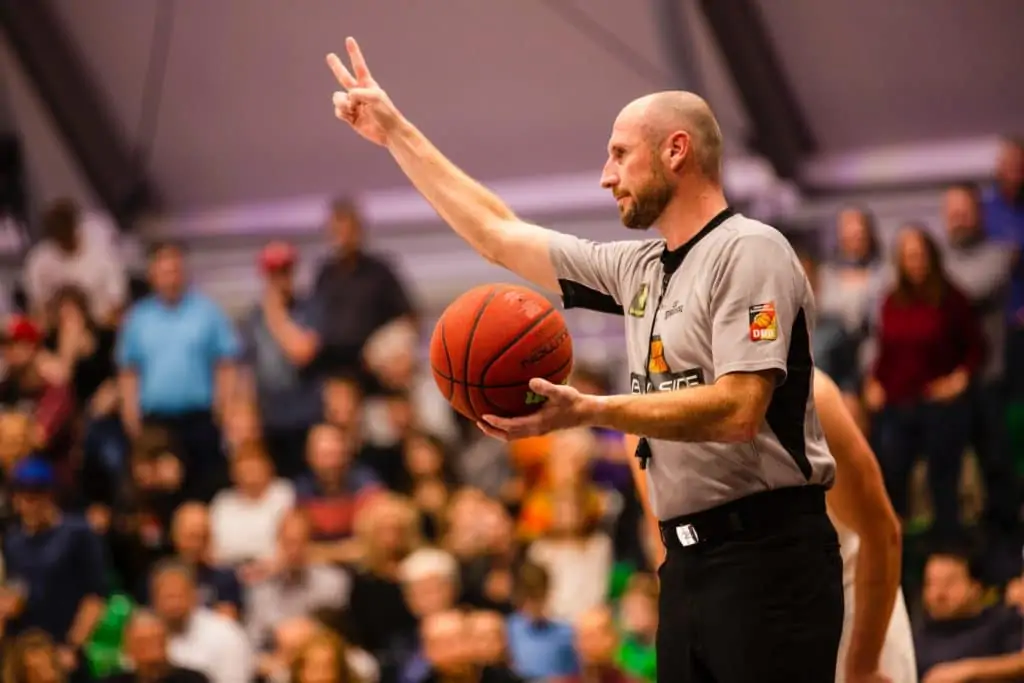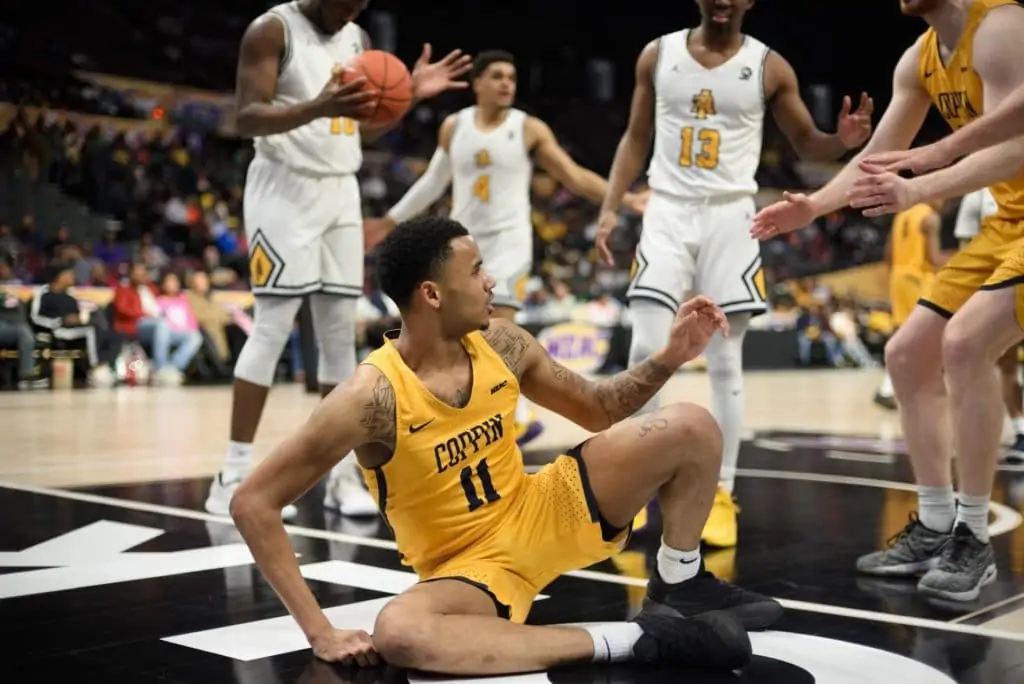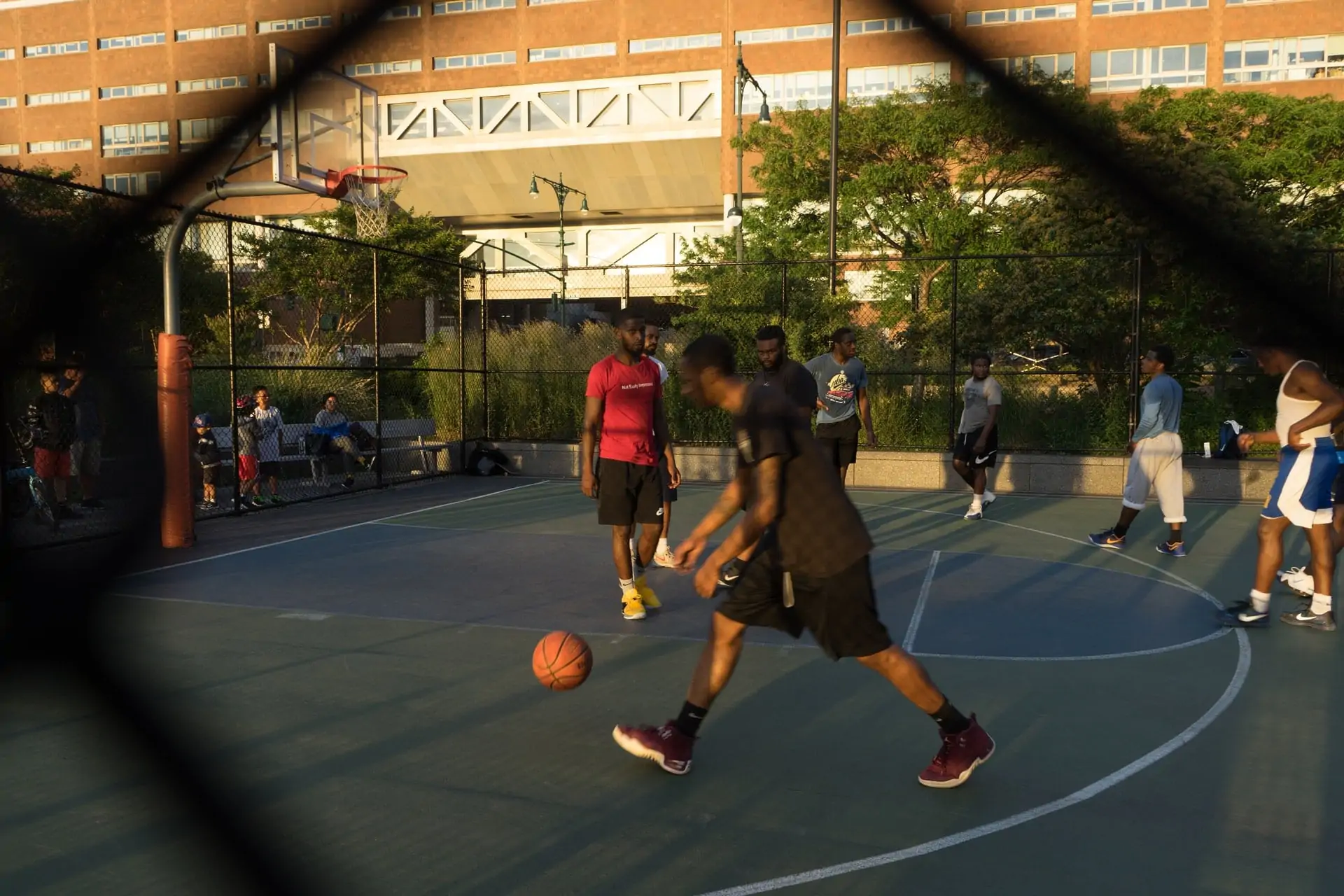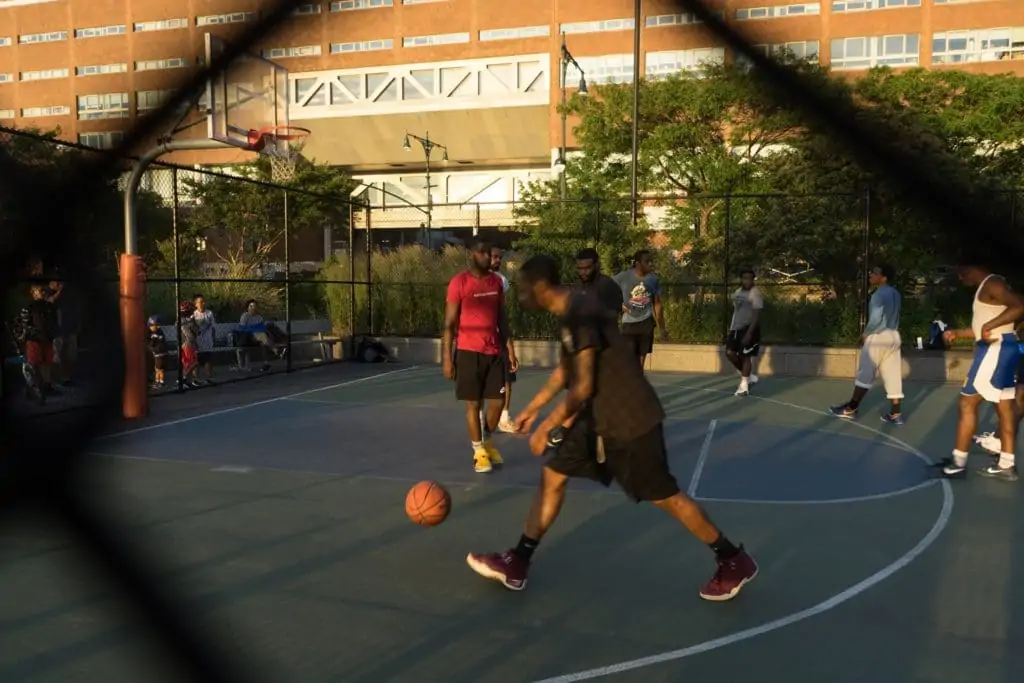We are 100% sure that if you ask any basketball player on the planet, how many rules are in basketball, you will never get the correct answer. I bet you are now trying to answer the question yourself.
We play a game that has some very complex, dynamic, or varying rules. Basketball has some rules that are different based on the leagues in which you are playing.
Some of the rules of the game are quite simple and easy to remember. However, some are quite the opposite. We will be doing our best to explain the rules of the game in-depth for you today. Hopefully, we can help you to avoid arguments the next time you enter the gym.
 How Many Rules are in Basketball?
How Many Rules are in Basketball?
Unfortunately, this question does not have a clear-cut answer. We would have to answer based on the league that you are playing in. Some leagues around the world officiate heir games and administer their leagues based on the rules stipulated by FIBA. In the USA, the high school league, NCAA, and the NBA all have a different amount of regulations.
There are a lot of categories regarding rules in basketball. There are categories concerning the court to the rules regarding the players. Let’s categorize the rules so we can have a basic understanding of the game.
Court Dimensions – Equipment
In leagues around the world, basketball games are played on courts that have regulations governing how the courts should be marked. Each area on the court has a predetermined dimension. These dimensions need to be observed for the court to be deemed as legal. This is for all lines from the free-throw line, the three-point line, the areas in the key, the touchlines to the boxes designated for off-court areas.
There should be a body tasked with inspecting and ensuring that all courts are legal before they are accepted for use. In addition to the courts being appropriately marked, the equipment used by players should also be properly organized and built. This goes for the rims and the backboards.
Some leagues have dimensions and materials specified for these to be constructed with. Safety equipment should also be regulated even though this isn’t the standard for every league, unfortunately.
Basketball rules also include the duties of the officials.
Officials range from game officials to the scorers and timers. In the NBA, game officials include crew chief, the referees, the Replay Center, and the Umpire.
Next, we have the rules for players, coaches and substitutes.
On the court, the rules allow only five players for each team. After a player has fouled out, he is asked to leave the court. In some leagues of the player can be asked to leave the game entirely. Some rules determine who can interact with the referee throughout the game.
The team captain is the only player that can check with an official about the interpretation of a rule during a game. A coach should be positioned on the bench. They can also walk from the substitution box line to the baseline. If a coach violates these parameters, the referee should assess him with a technical foul immediately.
If a player has been given the role of a coach, so now he is a player-coach, he should conduct himself in the same way as any other player should. If other persons are seated on the bench, meaning persons that are a part of the club, these persons are expected to conduct themselves in a dignified way.
Depending on the league being played, the bench can only be occupied by specified persons. In the NBA, the head coach, three assistants, a trainer, and players occupy the bench. Some rules determine how substitutions can be made. In most cases, substitutions are only allowed after a dead ball.
Uniforms
In every league, the uniforms worn by players are governed by a specific set of rules. The number on each jersey is quite essential. Numbers should be placed on the front and back of the jersey in a color that contrasts with the jersey’s color. In most scenarios, home teams should wear light-colored jerseys while the visiting teams wear darker colored jerseys.
Clock rules
Each basketball league has its own rules as it relates to how long quarters should be. In the NCAA, the rules state that the game should be divided into halves and not quarters. Games that are played under FIBA official rules follow the FIBA game clock rules.
Games being played in the United States will follow the game clock rules of their specific league. In addition to the game clock, other rules refer to time such as shot clock violations, timeline violations, and other time violations while the game is being played.
There are also rules per league that will tell each team how many timeouts they have available. It is up to the coaches to determine when and how to use these timeouts. Some leagues will allow only coaches to call a timeout, while others will allow both players and coaches to make the call.
Violations and Penalties
In addition to the rules previously mentioned, there are rules in basketball that concern violations, penalties, and how these violations and penalties should be officiated. There are various violations in basketball, such as out of bounds violations and fouls.
Basketball is said to be a non-contact sport by many people. However, basketball has more contact than it does not because of the nature of the game. Many rules govern how these contacts can be legally carried out. This is where fouls come into play.
Fouls can be carried out by both persons on offense and the persons on defense. For a complete list of fouls and their penalties, please refer to the NBA rulebook here. You can also find a complete list of basketball rules on that page.
 What are the Original 13 Rules of Basketball?
What are the Original 13 Rules of Basketball?
When the great James Naismith came up with this amazing game that we all love, he needed to implement rules by which the game should be played. Basketball now has over a hundred on and off the court rules, but when the game was created, James Naismith only made 13 basic rules by which players and officials should abide. Here is the complete list of James Naismith’s 13 rules of basketball.
 What are the Different Fouls and Violations in Basketball?
What are the Different Fouls and Violations in Basketball?
When a player starts to play basketball, their coaches will tell them the rules for dribbling the ball, the rules for playing defense, and how they can score the ball. As a player develops his game and his knowledge of the sport, he will begin to learn that many other violations and fouls are included in the sport. Here are some of the common violations and fouls that basketball has.
Dribbling violations
There are two main dribbling violations in the sport of basketball. These are double dribbling violations and traveling violations. A double dribble is a violation that occurs once a player picks up the ball or ends his dribble and then starts to dribble instead of passing or shooting the ball. This is a No-No in basketball.
Once a dribble ceases, it must be followed by a shot or a pass. If the player dribbles the ball again, then he will be charged with a violation, and the ball will be turned over to the opposing team. The next violation is a traveling violation.
There are many ways that a travel can occur. A basic way to look at a travel is to say that it happens when a player takes an illegal number of steps while in possession of the ball without dribbling the ball. A travel can occur when a player, while on the move, gathers the ball, and the takes more than two steps after.
Travels can also happen when players that are standing receive the ball and then move both legs before completing a dribble. Traveling violations are also turnovers that give possession of the ball to the opposing team.
Another violation that is sometimes called in games is the carrying violation. A carry is when a player palms the ball and temporarily pauses the natural flow of the ball while dribbling. This violation is maybe the most frequent dribbling violation that you will witness as today’s crop of players doesn’t seem to recognize this rule a lot.
Carrying the ball often allows players to perform fancy moves, and they disregard the rule for an effort to look fancy, and sometimes they simply can’t play the game any better.
Technical and time violations
Other minor violations include striking the ball with your feet or your fists out of anger. This is a very unsportsmanlike violation and could result in a technical foul. There are also time violations that are very common in basketball. In different leagues, players have different amounts of time that they needed to complete actions.
These include 24-second shot-clock violations, 8 or 10 seconds timeline violations, 3-second violations, and 5 Second violations. After crossing over the half-court line while on offense with the ball, players are not allowed to take the ball back behind the half-court mark.
This violation is considered as a backcourt violation. For a complete list of violations, please check rule number 10 of the NBA rulebook here.
Personal and technical fouls
Let’s now look at the different fouls that are commonly called in basketball. The categories of fouls in basketball include personal fouls and technical fouls. A personal foul can be assessed on a player that holds, pushes, charges into, or impedes the progress of an opponent with their arms, hand, legs, or abnormally positioning of their body.
Technical fouls, on the other hand, can range from a variety of other illegal actions that happened both on and off the court.
 What is the Three Second Rule in Basketball?
What is the Three Second Rule in Basketball?
A 3-second violation is normally a violation that occurs when a time limit of three seconds is allowed to do something, and then the time passes before the action or process is completed. Basketball has two types of 3-second violations; these include offensive 3-second violations add defensive 3-second violations.
 What is the Five-Second Rule in Basketball?
What is the Five-Second Rule in Basketball?
A 5-second violation in basketball happens in a variety of ways. A player attempting to inbound the basketball from the sidelines or end line has 5 seconds in which to release the ball. In some leagues, there are other five-second violations. One of them is holding on to the basketball for more than 5 seconds while being closely guarded.
In the NBA, there is a five-second rule that states a player can only back down another player with their back to the basket while operating below the free-throw line, for a maximum of 5 Seconds. The last five-second rule in basketball is for free throws. FIBA rules state that a player should shoot a free throw within five seconds.
 What is the Ten Second Rule in Basketball?
What is the Ten Second Rule in Basketball?
The 10-second rule is what most people know as the 8-second rule. Outside of the NBA, each team in each league is given 10 seconds within which to cross half-court. If they cannot get the ball across the timeline within the 10 seconds, the ball will be turned over to their opponents.
 What is the 24 Second Rule in Basketball?
What is the 24 Second Rule in Basketball?
The 24-second rule refers to the shot clock in basketball. Most leagues in the USA and across the world recognize a 24-second shot-clock. What this means is that the team has 24 seconds within which to attempt a shot that hits the rim or score.
If 24 seconds pass and the team has not managed to attempt a shot that scores or hits the rim, this will result in a turnover.
Wrapping Things Up: What are the Basic Rules of Basketball
Basketball is a beautiful, engaging, and dynamic game; however, it does have some rules that can be tricky and confusing. Don’t be disheartened by this as the rules, even though tricky and complicated, can be easily understood. If they are explained correctly, they can be broken down for even the youngest learners.
The rules of basketball serve many purposes. Some rules help the defense, support the offense, make the game more entertaining, and protect the players.
Until next time ballers, learn the rules and play safe.
Did you find this helpful? Then also check out other basketball FAQ articles here.
> How to Start Playing Basketball: The Ultimate Guide
> How to Start Playing Basketball Again: Making a Return
Want to get better at basketball?
Join our newsletter & get our comprehensive
101-page basketball guide.
Become a better baller today 👇


 How Many Rules are in Basketball?
How Many Rules are in Basketball? 
 What are the Original 13 Rules of Basketball?
What are the Original 13 Rules of Basketball?  What are the Different Fouls and Violations in Basketball?
What are the Different Fouls and Violations in Basketball? 
 What is the Three Second Rule in Basketball?
What is the Three Second Rule in Basketball? What is the Five-Second Rule in Basketball?
What is the Five-Second Rule in Basketball? 
 What is the Ten Second Rule in Basketball?
What is the Ten Second Rule in Basketball? What is the 24 Second Rule in Basketball?
What is the 24 Second Rule in Basketball?

